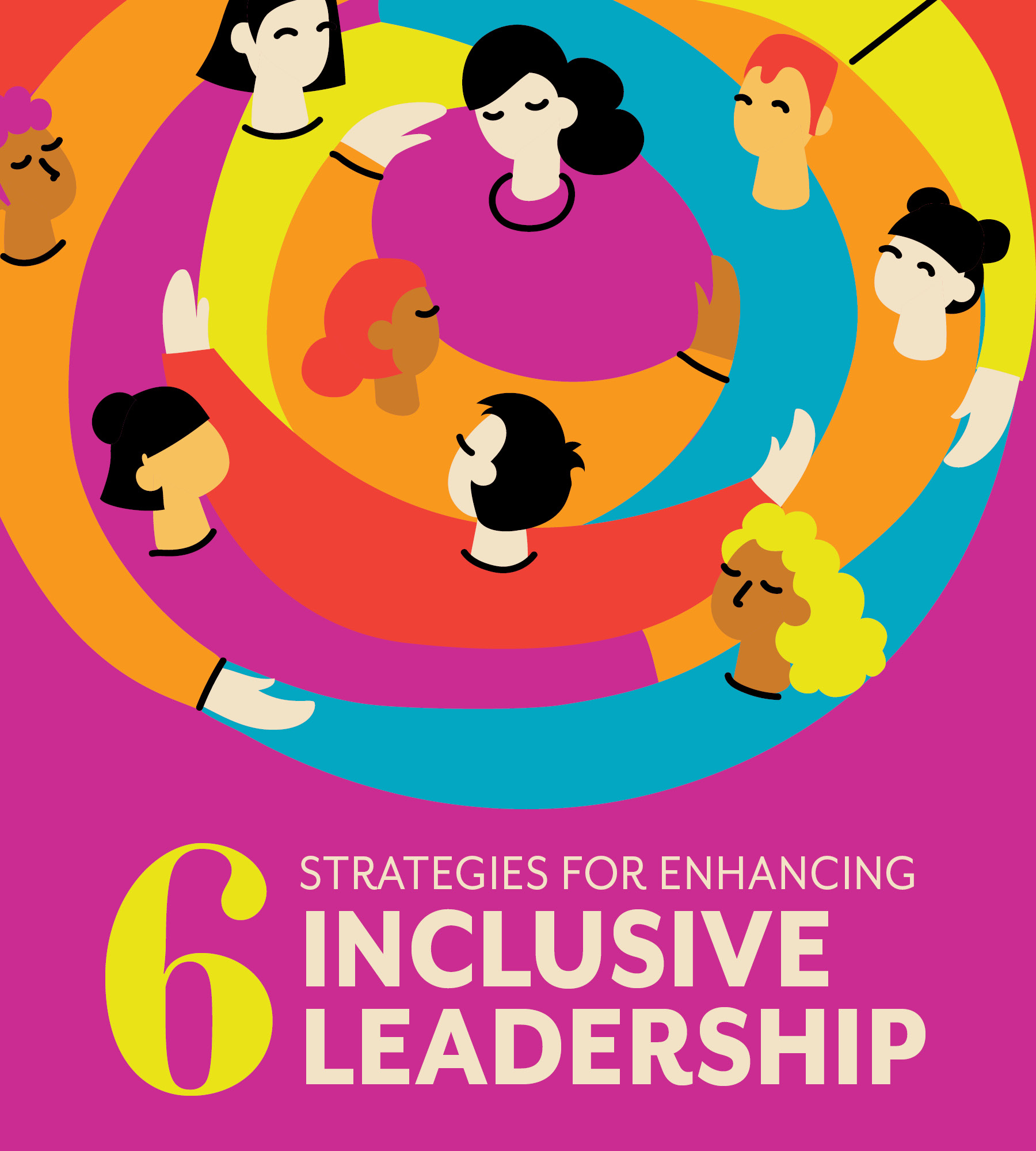Language
You can read the magazine in one of the following languages
Innovation is anchored in diversity and open-mindedness. Organizations that want to succeed must cultivate an environment that embraces these values. This is an environment where every team member feels valued and respected – a testament to the power of inclusive leadership.
Inclusive leadership is the ability of a leader to embrace diversity and foster a culture where all employees thrive and contribute their best for organizational success. An inclusive leader appreciates and leverages a diversity of perspectives, backgrounds and experiences to ensure organizational goals are attained.
Here, we explore how inclusivity enhances collaborative decision-making and how this can help drive competitive advantage.
Collaborative decision-making is not just an approach but a mindset that brings people from different levels in an organization to the decision-making process. It’s about sharing ideas, information and perspectives for informed decision-making to meet a common goal.
A 2020 Gallup study established that only 24 percent of managers in the United States feel confident in their organization’s decision-making process. Furthermore, an even smaller group, just 14 percent express dissatisfaction with both their understanding of how decisions are made and the speed at which they are executed. This stat reflects the status of decision-making processes in many United States organizations.
The main reason decision-making is not working in most of these organizations is that it is a highly individualized affair instead of a collaborative function. Collaborative decision-making has numerous benefits for organizations and can enable them to avoid numerous pitfalls.
Collaborative decision-making encourages idea-sharing through brainstorming sessions where various stakeholders share ideas and experiences. This open dialogue enables decision-making teams to identify and explore new, highly innovative solutions to complex problems.

An inclusive leader appreciates and leverages a diversity of perspectives, backgrounds and experiences to ensure organizational goals are attained.
According to Forbes, collaborative decision-making boosts innovation by up to 50 percent, which underscores the importance of overall collaboration in cultivating a culture of innovation.
One of the most effective ways of boosting employee engagement is by awarding them slots on the decision-making table. This means asking for their input in terms of ideas as well as feedback.
It also entails giving employees autonomy over their workflow. Employees feel valued and respected when they get the opportunity to participate in decision-making.
According to Gallup, highly engaged employees produce better outcomes, experience less burnout and are less likely to leave an organization.
Organizational self-awareness is vital for success since it enhances the understanding of strengths, weaknesses and overall leadership efficiency. Interdepartmental collaboration in decision-making enables organizations to understand their internal weaknesses and external threats, which are the blind spots.
Collective decision-making to uncover blind spots is particularly important when an organization is facing headwinds. It enhances information dissemination to ensure everyone is well informed, even when leaders are overwhelmed.
Collaborative decision-making pools knowledge and expertise, ensuring decisions are based on accurate and reliable information. This helps avoid biases and errors, which could impact efficiency and overall performance. Additionally, collaborative decision-making improves the quality of decisions by avoiding consensus.

The main reason decision-making is not working in most of these organizations is that it is a highly individualized affair instead of a collaborative function.
Most times, managers go with the opinion of the majority to strive to foster group harmony. However, this consensus leads to an incomplete evaluation of the problem since people often ignore what they deem uncomfortable.
Effective collaborative decision-making can significantly enhance team productivity and outcomes. Here are six best practices to guide your team toward successful collaboration.
To avoid confusion, minimize conflict and save time, it is important to ensure that all team members understand the problem and the outcome the organization aims for. Having a problem statement that accurately defines the scope and criteria of both the problem and the expected outcome can guide the brainstorming process.
Organizations need to leverage digital communication technologies to foster information sharing and interdepartmental collaboration in general.
Psychological safety in relation to collaborative decision-making is the belief by a team player that they will not be victimized for expressing themselves through ideas, questions or criticism. Psychological safety does not imply comfort or team members being nice but rather the freedom to openly and honestly express ideas.
The best way to establish psychological safety and promote collaborative decision-making is by promoting dialogue, celebrating new ideas, establishing norms for constructive criticism and facilitating every team member to speak.
According to the Journal of Environmental Research and Public Health, the level of a team’s psychological safety influences the team member’s willingness to share information while enhancing their collective responsibility for team decisions. This, in turn, enhances decision-making effectiveness.
The theory of collective intelligence holds that team members collaborate to attain a level of knowledge that surpasses the problem-solving ability of any single team member. A team’s collective knowledge and problem-solving ability is a vital resource that can harness the synergy of diverse people and unlock an organization’s full potential.
The easiest way to leverage the power of collective intelligence is by fostering inclusivity and empowering all team members to participate in decision-making.

Organizations should consider implementing inclusive leadership across all functions to enhance employee engagement, foster teamwork and improve overall organizational performance.
Team leaders should cultivate an environment where every team member at the decision-making table feels valued and respected. This is by encouraging each team member to actively listen and show appreciation for the efforts made by another team member. This recognition and appreciation of team effort raises self-esteem, fosters confidence and promotes responsibility.
The parking lot concept is a smart way to ensure everyone’s voice is heard and useful ideas aren’t wasted. When a member of the organization brings up a good idea in the brainstorming that is not directly relevant to the topic of discussion, acknowledge the good input but put it in the ‘parking lot’ for later. Having a separate parking lot list collects great ideas without interrupting the decision-making process.
After the team defines the problem and decision-making goal, the next step is establishing and weighing options. Some techniques that can be used in this process include SWOT analysis, mind mapping and brainstorming. Creating a pros and cons list facilitates the proper comparison of alternatives.
After the assessment of all available options and narrowing down to the most viable, then the team should make a compromise and settle on one option that guarantees the best outcomes.
Once the team has settled on one strategy, the next step is implementing it. This strategy should be effectively communicated to all stakeholders and continuously monitored for effectiveness. Feedback, a crucial part of the process, is solicited from the stakeholders. Their insights, combined with performance evaluation results, should then be used to make adjustments and improve the intervention. This emphasis on feedback ensures that every voice is heard and appreciated in the decision-making process.
In conclusion, diversity and inclusion in decision-making bring on board different perspectives and experiences. This leads to decision-making since vital opportunities and risks often overlooked in homogenous decision-making environments are effectively captured.
The best way to enhance diversity and inclusion in decision-making is by empowering the different voices to be heard and considered. Organizations should consider implementing inclusive leadership across all functions to enhance employee engagement, foster teamwork and improve overall organizational performance.

Prakash Mana
Contributor Collective Member
Prakash Mana is a seasoned technology executive with over 25 years of industry experience. As the CEO and Co-Founder of Cloudbrink, Prakash has a strong track record of success, having served as CPO and CTO at Pulse Secure and held responsibilities for Citrix’s NetScaler security gateway business. He is recognized for his leadership in cybersecurity and networking particularly as it applies to remote and hybrid work technology. For more visit https://cloudbrink.com/about/prakash-mana/
